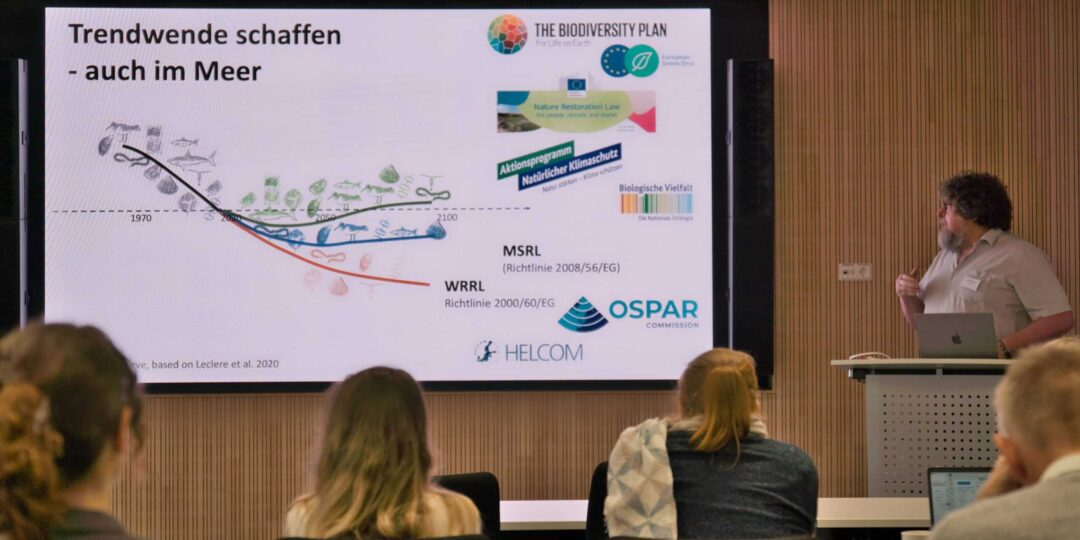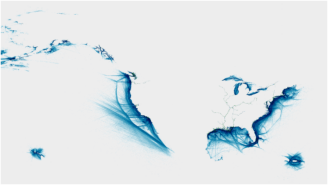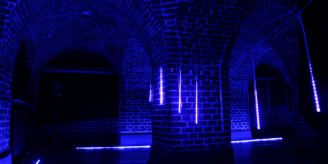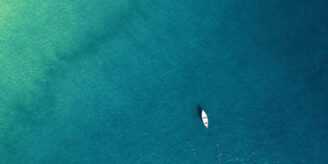From tooth fish to food webs, from molecular genetic tools to underwater acoustics: dive into our current research
Topics
“Faktencheck Artenvielfalt” – and then?
In October 2024 the first Germany wide biodiversity assessment “Faktencheck Artenvielfalt” was published. The HIFMB led the writing process of the chapter on status and changes of coastal and marine biodiversity, their drivers and consequences, as well as options and needs for action to improve its status. The assessment compiled information and data from numerous …
Did you know?
Unicellular plankton covers a size range that is comparable to the size difference between a small fish and a city like Oldenburg.
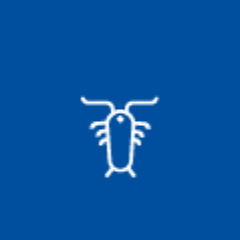
The Ocean – an Empty Space?
The ocean is most often seen as an empty space, for example in maps, where it is most often depicted as a blue shaded area next to colorful lands, mountains and valleys, forests and deserts, towns and roads. This is due to the traditional approach to creating maps and thinking about landscape (the clue is already in the term), people going as far as they can and writing about the things they find. The ocean in contrast is an inhospitable place to wander for humans, only with the aid of devices such as boats it becomes possible to leave the shore, creating the image of a vast desert in our minds.
Mirrors – Following the Acoustic Journey of the Minke Whale
Mirrors is a sound installation that follows the acoustic journey of the Minke Whale as it travels from Antarctica to Namibia. A collaboration between artist-researcher Geraint Rhys and Marine Acoustic scientist Dr Ilse van Opzeeland it charts how the vocalizations of the Minke changes with a change in location as it migrates across the oceans.
Unpacking Plastic Oceans – Placing Photography in Environmental Storytelling
This blog post is part of the ‘Plastic or Planet?’ blog series where we discuss the National Geographic exhibition ‘Planet or Plastic?’ hosted in Oldenburg during the summer of 2022. We are part of an interdisciplinary group of early career researchers working at the Helmholtz Institute for Functional Marine Biodiversity (HIFMB). Here, we focus on …
Activity Book on Deep Sea Mining
Deep-sea mining is a potential new industry in which non-renewable resources could be extracted from the bottom of the deep sea. However, as little is known about the ecosystems of these depths and the impacts of this industry, the prospect of mining these resources poses a great risk.
“The ship has reached the shore!”
With these exhausted but happy words, Rena Lee, President of the UN Negotiations on a Protection of Biodiversity in International Waters, announced that the member states had reached an agreement on March 7, 2023, after more than years.
Polar Sounds: Remixing the Sounds of the Arctic and Antarctic Seas
Polar Sounds is an art-science collaboration in which sound artists from around the world were able to use 50 sound clips from the Arctic and Antarctic seas to create their own compositions. Nearly 300 artists from 45 countries applied for the opportunity to reinterpret these sounds.
